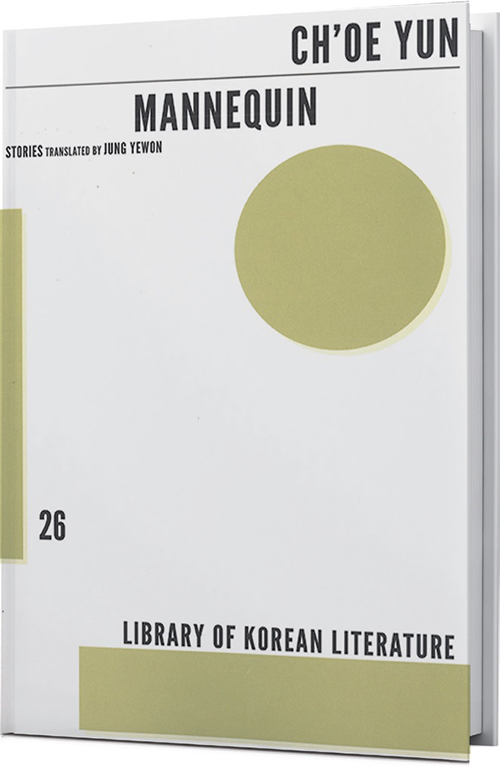
What is true beauty and how can human beings express that true beauty? Ch’oe Yun’s mesmerizing narrative places this ageless question at the heart of the novel through the character Yi Jina, otherwise known as “Jini,” a bewitchingly beautiful advertising model. Jini has modeled since infancy, laboring as the sole breadwinner of her impoverished, dysfunctional family until one day she decides to leave home. Her unexpected departure forms a gaping hole in the lives of each member of her family, but at the same time this vacuum also propels each of them, including Jini, toward a kind of liberation that allows them to discover, understand, and express true beauty even in the midst of realizing what’s most repugnant within the self while having to live in the ugliness of the world. Thus, Ch’oe Yun’s novel turns the apparently prosaic question concerning true beauty into a penetrating meditation on our capacity to strive toward expressing the impossible.
Resembling William Faulkner’s As I Lay Dying, there are multiple narrators with each chapter being narrated by one of the characters through their own point of view, except Jini and her mother Agar-Agar, whose point of view remains in the third person. Each chapter, then, presents the characters’ journey to understanding their human weakness in relation to others but especially in relation to Jini.
Shark is the explosive and violent older brother who works as Jini’s manager. His job is to incessantly negotiate a higher price for Jini’s body parts. He craves solitude and dreams only of living on an uninhabited island all the while enmeshed in the capitalist system of exploitation and human degradation.
Agar-Agar is Jini’s mother. She is too scared to act although she witnesses her son’s increasingly abusive behavior, including the near strangulation of Jini as a child. Out of a sense of guilt and incompetence, she resorts to hiking and worshiping the mountain spirit for solace and answers.
Starfish, although just as beautiful as Jini, has lived in Jini’s shadow all her life. She, in fact, acts as Jini’s surrogate mother and feels abandoned and overlooked by her own parents. Starfish has complicated emotions for her sister that range from extreme hate to love.
Conch is Jini’s agent who has lived in her house as an honorary member of the family since “discovering” the enchanting Jini as a child. She intimately links her self-identity and value to Jini so much so that she convinces herself that she knows Jini better than any other living being, albeit mistakenly.
Lionfish meets Jini for only a fleeting moment while scuba diving. This encounter leads him to resign from his job as a marine biologist, to sell his worldly belongings, and to set out in a search for his “goddess.”
All of these characters are, in one way or another, enraptured by the inexpressible beauty that Jini possesses. Each attempts to name it—initially by treating Jini like a mannequin where they recognize her surface beauty and adorn her to fit their ideals. Throughout the novel, however, each in their own way endeavors to comprehend true beauty, which arrives only through their disavowal of Jini and recognition that they themselves are mannequins who are living without souls and without beauty. While these characters come to terms with understanding true beauty, the novel presses on to ask how true beauty can be expressed so as to be named.
The only character that is able to express beauty is Jini herself who also happens to be mute. She loses her voice—the physical voice to articulate sound—yet she is the most articulate character in the story. She expresses herself and responds to others through every minute movement of her face and body. And after she leaves home, dance becomes the primary medium of communication for Jini. A method of expression so piercing and passionate that it draws out and lays bare the inner most recesses of thought and emotion from those who encounter it.
The narrative seems to suggest at once the frailty and power of human communication for creating and understanding true beauty. Furthermore, the story instills the notion that words are often inadequate and language repeatedly fails to fully express the spectrum of the sublime. In fact, many events in the novel are not explicitly named nor are the taboos vividly detailed. Yet the subtlety leaves a marked impression that lingers even more forcefully. This is exactly why Mannequin is a powerful novel. It is because Ch’oe Yun is able to give words, in such a loving way, to that which is at times impossible to express. In this novel as well as in her other works, Ch’oe Yun shows that literature constantly strives to reveal and create true beauty.
*Article from Korean Literature Now (Vol. 34 Winter 2016) published by the Literature Translation Institute of Korea
(URL: http://koreanliteraturenow.com/poetry-fiction/possibility-impossible-expressions-mannequin-ch%E2%80%99oe-yun#prettyPhoto)
Most popular
- Korea Trade Commission proposes anti-dumping duty on Vietnamese cold-rolled stainless steel products
- MSIT Releases First Investigation Results on SKT Data Breach — No IMEI Leak Confirmed
- Republic of Korea Undertakes the Second Joint External Evaluation to Advance Public Health Emergency
- Korea and Costa Rica hold trade ministers’ meeting
- S. Korea Designates Five Alcoholic Beverage Makers as Must-Visit Places for the Year 2025
